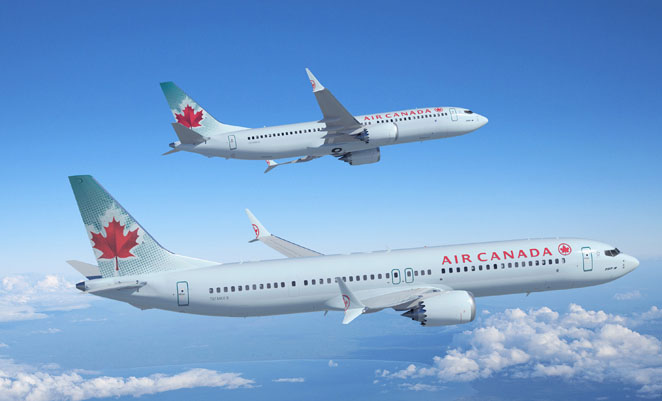
Canada has officially approved the design and safety changes introduced on the 737 MAX and is expected to lift its flight ban on the jet in January.
Canadian regulator Transport Canada has put in motion the first step to bring the troubled jet back to the sky by approving the safety changes that Boeing and the FAA have introduced on the MAX.
However, the regulator said the jet still requires a Canadian airworthiness directive, which may be granted in January, following the necessary software and system upgrades being installed on the aircraft, and the new necessary training protocols introduced.
“It’s possible that after January, once the planes have been modified and the pilots and everybody are trained on the procedures, we will allow the MAX to fly,” Transport Minister Marc Garneau told reporters.
Canada’s approval follows that of regulators in the US and Brazil, both of which have already organised their first commercial flights on the MAX in more than 20 months.
Europe’s regulator, the European Union Aviation Safety Agency, is also expected to lift its grounding order on the 737 MAX in January.
Meanwhile, in China, the largest market for the MAX and a nation of growing prominence in the aviation sector, has made no announcement of its intentions to approve the MAX’s return to commercial service.
Notably, both Transport Canada and EASA have diverged from the US FAA on some requirements for crew training, and have instead provided pilots leeway to stop a noisy “stick shaker” alarm from vibrating based on faulty sensor information, halting a distraction thought to have added to the workloads of the crews involved in the crashes.
The Canadian regulator said its “decision to put additional safety measures in place does not imply that a US-configured aircraft is inherently unsafe.”
The news comes after Transport Canada announced that it will reform the way it validates aircraft, and take a harder look at the relationship between regulators and the manufacturers they oversee, in light of the Boeing 737 MAX fiasco.
Transport Canada’s director of civil aviation, Nicholas Robinson, said the regulator would “have to look at the interaction that different authorities have with their manufacturers” during a Canadian hearing on aircraft certification and the MAX disasters.
To date, international aviation regulators would usually promptly follow the guidance of the FAA over Boeing aircraft. However, many are now wary of seeming to toe the FAA line after the US agency was faulted for lax oversight.
“It’s public record that information was not forthcoming with regard to particular aspects of this aircraft,” Robinson said. “That will have to change.”
The ability of regulators to co-operate is crucial in a sector spanning dozens of jurisdictions across the globe.
Having a regulator such as the FAA do the heavy lifting to certify US planes reduces costs and saves time, because agencies abroad can validate the results without having to duplicate them.
This process could change into the future, even after US lawmakers moved to introduce widespread changes in US aircraft certification processes in order to reduce oversight and corruption.
Robinson said that while Transport Canada, which spent about 15,000 hours in its independent validation of the MAX jet, expects to play a greater role in overseeing aircraft in the future, it does not intend to displace the existing system.
“We’ll see a greater involvement in validation, but we do have to keep with the system where the state of design certifies the aircraft and the other leading authorities go ahead and validate the aircraft independently,” he said.










